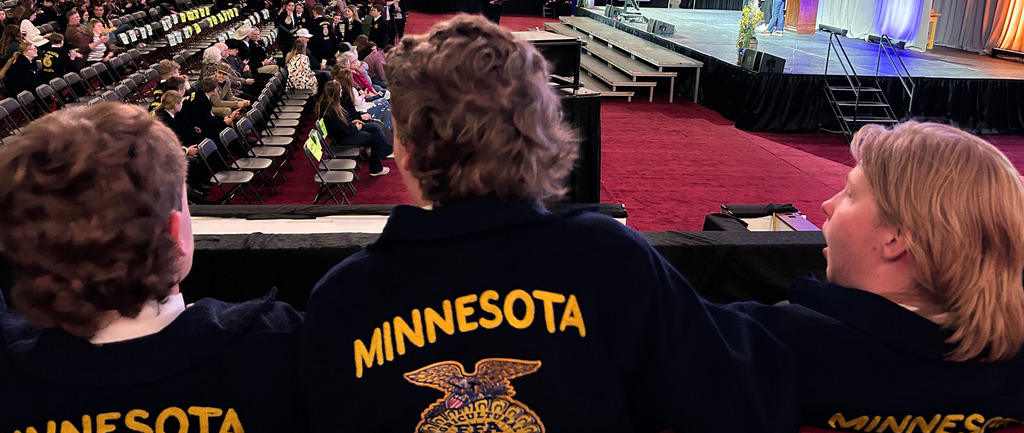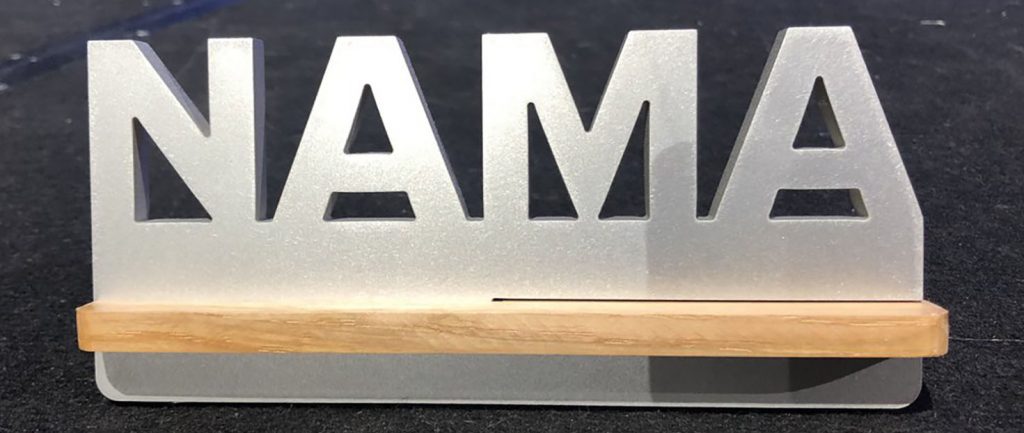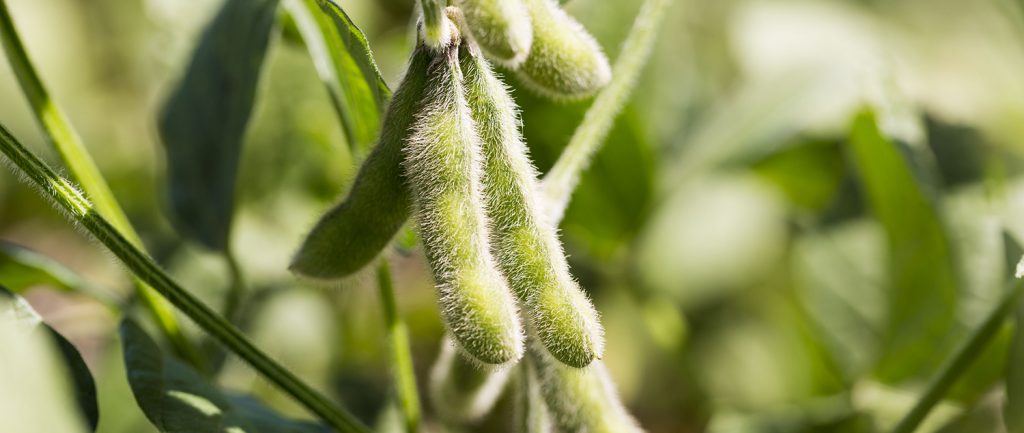This story was first featured in the July – August 2018 issue of Soybean Business. To view the digital version of this issue, click here.
Zach Johnson is just like any other Minnesota farmer. He spends countless hours preparing for the upcoming growing season, scouts his fields throughout the summer, all while hoping for a record yield as October nears.
But what makes Johnson just a little bit different than other farmers is the videos he records of his day-to-day life on the farm and uploads to YouTube for the world to see.
“I had the idea in my head for almost two years before I decided to start my YouTube channel,” Johnson, 32, says. “I told my wife I thought it’d be cool to start a channel and just throw up a couple videos every week, allowing people to follow a farmer through the growing season. My original plan was to just do the one growing season.”
Johnson, who is known online as the MN Millennial Farmer, grew up near Lowry, Minn., and graduated from Minnewaska High School in 2003. After high school, he attended college in Bemidji for their high performance engine program. Johnson then returned home in 2005 and began farming full time on his family’s farm.
Johnson farms 2,500 acres of corn and soybeans with his dad. They also have a retired, part-time employee, who helps when needed.
Besides growing corn and soybeans, Johnson and his wife Becky also raise three kids – Onyx, Rhiannon and Isla. Their niece, Aurora, lives with them, as well.
Using his farm as his platform, Johnson began recording himself talking about his day-to-day tasks. And to Johnson’s surprise, his channel has done much better than he expected, nearing 59,000 subscribers with many of his videos averaging over 200,000 views.
“It just took off,” he says. But starting the YouTube channel wasn’t the easiest decision for Johnson. “At first, I was too shy to actually do it,” says Johnson, former president of the Pope County Corn and Soybean Growers.
“I wasn’t sure what the neighbors would think, or what dad would think. I wasn’t too sure if I wanted to carry a camera around. To be honest, I still don’t know about that.”
One day, the idea became reality after a phone call with his wife.
“I said to my wife, ‘If I were to ever start a channel, today would be a good day to do it.’ She told me, ‘Then do it.’ It was like, stop talking about it and just do it.”
In the past eight months, Johnson’s YouTube channel has skyrocketed.
“My family and neighbors think it is crazy I can put a video up about charging the batteries on all the equipment and moving them around in a snowstorm and can get 200,000 people to watch it,” he says. “But they don’t laugh at the idea that I’m doing it – they have all been supportive.”
Johnson says his dad doesn’t mind if he’s in the background of the videos but he prefers for the camera not to be on him. Same with their part-time employee.
“For that reason I don’t carry the camera around with me when they’re here,” he says. “I get a lot of questions online about if I’m the only guy out here on the farm doing all the work. But I only take the camera out when no one else is around.”
Ready. Set. Action.
Recording content and editing the video is now just a regular line item on Johnson’s farm “to-do” list.
“I do 95 percent of the editing,” Johnson says. “Lately, I will upload the video and get the file going. My wife will help chop it up. Then when I get home after work at night, I’ll start going through the file and piece it together the way I really want it. That seems to work fairly well.”
Johnson says the average editing time for a single video is three hours. Some videos take him five to six hours, where others will only take an hour. All of which is done after a full day of farming.
“During planting and harvest, I’ll find myself in the tractor until 10 or 11 o’clock at night but then coming home and editing a video until 1 a.m.,” he says. “It’s busier, but there’s so much more content during this time.”
From when he first began uploading videos compared to his videos today, Johnson has made several adjustments.
“When I first started doing videos, I didn’t want to edit them. I wanted them to be raw and to be real. But I figured out that if you edit them and get rid of the dead air, people will want to watch them more. You can still be real but you have to keep the video moving or viewers will get bored.”
Johnson first began shooting his videos with a cellphone, then moving to a GoPro, but now uses a higher-quality Cannon Point & Shoot G7 X camera.
Besides YouTube, Johnson has also expanded onto other social media platforms, including Instagram and Facebook. He also has Twitter, LinkedIn and Snapchat, but spends most his time on the other three.
“I like YouTube the most, but it takes more time,” he says. “But I try and put a photo on Instagram every day, which is also linked to my Facebook. I find that fun. And that’s gotten plenty of attention, too.”
A story to tell
From his first video to the most recent upload, Johnson’s mission has remained the same – to be a face for farming.
“I wanted to try and be a real personality. Somebody who is actually out here farming,” Johnson says. “This is my family farm. I have kids. My mom and dad live here. This is what we do. And this farm has been in my family for 140 years … I wanted to show what we do every day.”
Johnson says his videos allow him to relate to others who may not know who is growing their food.
“It’s up to us (farmers) to tell the truth and relate to others about what we do,” he says. “It’s kind of cliché at this point, but if we don’t tell our story, someone else will. The way I look at it, part of what I do as a farmer is advocacy.”
Johnson says that people who ask questions about hot issues aren’t always looking to fight.
“Those who ask questions about GMOs or pesticides don’t always have bad intentions,” he says. “They just don’t know what they don’t know.”
Johnson says he constantly has a debate in his head whether he should discuss more controversial issues in his videos.
“I can’t decide if I should get more controversial or stay the farmer that they trust. I don’t want to look like I’m pushing pesticides are good, GMOs are good, drainage tile is good,” he says. “I want to make sure there’s that balance.”
When it comes to online advocacy, Johnson says there’s one thing to always keep in mind – never argue.
“Don’t prepare to argue, prepare to have a conversation,” he says. “If someone just wants to argue, you have to remember you aren’t going to change their mind. There’s always going to be people who will be on your side, no matter what. And there’s going to be people who you are never going to convince. It’s the 70 to 80 percent in the middle we need to communicate with.”
As Johnson looks toward the future, he hopes to continue his advocacy efforts while reaching more people.
“I’d like to hit 100,000 subscribers by January 1,” he says. “That’s my goal. But five years down the road – I hope to still be doing this. That would be pretty cool.”
MN Millennial Farmer social media channels
- YouTube: MN Millennial Farmer
- Twitter: @farmmillennial
- Facebook: MN Millennial Farmer
- Instagram: mnmillennialfarmer
- LinkedIn: Zach Johnson
- Website: mnmillennialfarmer.com







